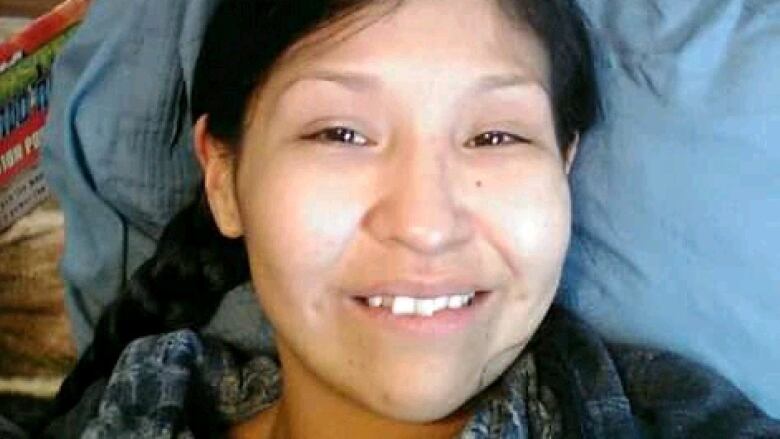Death of Yellow Quill woman found frozen exposes gaps in Sask. correctional system, advocates say
Kimberly Squirrel died in Saskatoon 3 days after being released from Pine Grove Correctional Centre

Advocates for incarcerated people say the death ofKimberly Squirrel, a 34-year-oldmother of six from Yellow Quill First Nation, shows significant gaps in Saskatchewan's corrections system.
Squirrel's body was found frozen in Saskatoon late last month. She had been released just three days earlier fromthe Pine Grove Correctional Centre near Prince Albert, about 140 kilometres northeast of Saskatoon.
"It certainly raises the issue that that there aren't enough services out there for women, both while they're incarcerated and certainly after they are released from an institution, whether that's federal or provincial,"said Patti Tait, the acting executive director at the Elizabeth Fry Society of Saskatchewan.
Squirrel wasn't one of theadvocacyorganization's clients, Tait said, but she points out thatgettingaccess to resources for incarcerated women is normally difficult, and that situation has been made worse byCOVID-19.
The Elizabeth Fry Society used to visitinstitutions to try toconnect with the women and build relationships, but can't do that right now because of the pandemic.
"Unfortunately, with the numbers of women that are incarcerated right now getting a telephone call out is difficult. And even though we have an 800 [toll-free] number, there's always a demand for the phones to be used by women who are trying to call family, as well as agencies in the community," she said.
"So it is really a sad testimony to how oursociety is dealing with with the issue of criminalized women."
Treatment resources'would pay huge dividends'
Squirrel was on remand, meaning she was facing charges but had not yet been convicted. She was also battling a crystal meth addiction.
Tait said she has seen examples of women who wait for a year ormorefor trial or a court resolution to their cases, and they don't get meaningful treatment or access to programs in the meantime. She wants that to change.
"If there were resources, remand resources, such as a treatment centre, such as a mental health facility, those kinds of expenditures by our society would pay huge dividends at the end of the day in the fact that women would be able to be healing while they are awaiting trial," she said.
Tait echoed the calls made by many othersfor more funding and more access to programming like mental health supports and addiction treatment.
Shawn Fraser, CEO of the John Howard Society of Saskatchewan, said Squirrel's death is part of a bigger problem.
"I think the big challenge that this speaks to is people being released from custody into homelessness. I think that happens all too often. And, you know, in this case, it really was a tragic ending."
'Revolving door' of homelessness, incarceration
People too often experience homelessness after release, and then may end up back in prison, he says.
"It can be a revolving door for some people, and that's just silly for us to tolerate that as a society. And it's also one of the most expensive ways for us to deal with incarceration."
Fraser says there are a few key issues he sees with the system currently, and like Tait, saysthe pandemic is exacerbating an already tough situation.
People released on remand often don't have access to a worker to help them with a release plan, he says. That's typically reservedfor those who have beenconvicted and are being released.
"When it is the case for people that have been convicted of a crime, ultimately the people making those case plans, by and large, have such a large caseload, it's hard for them to get really in-depth with what that case plan looks like," he said.
"And then on the community side, I think ultimately we're at a time right now where we have a lack of community support so even if you are able to make a case plan with someone, there has to be a bed waiting for them to fill."
With files from Bonnie Allen and Matt Duguid












_(720p).jpg)


 OFFICIAL HD MUSIC VIDEO.jpg)
.jpg)



























































































